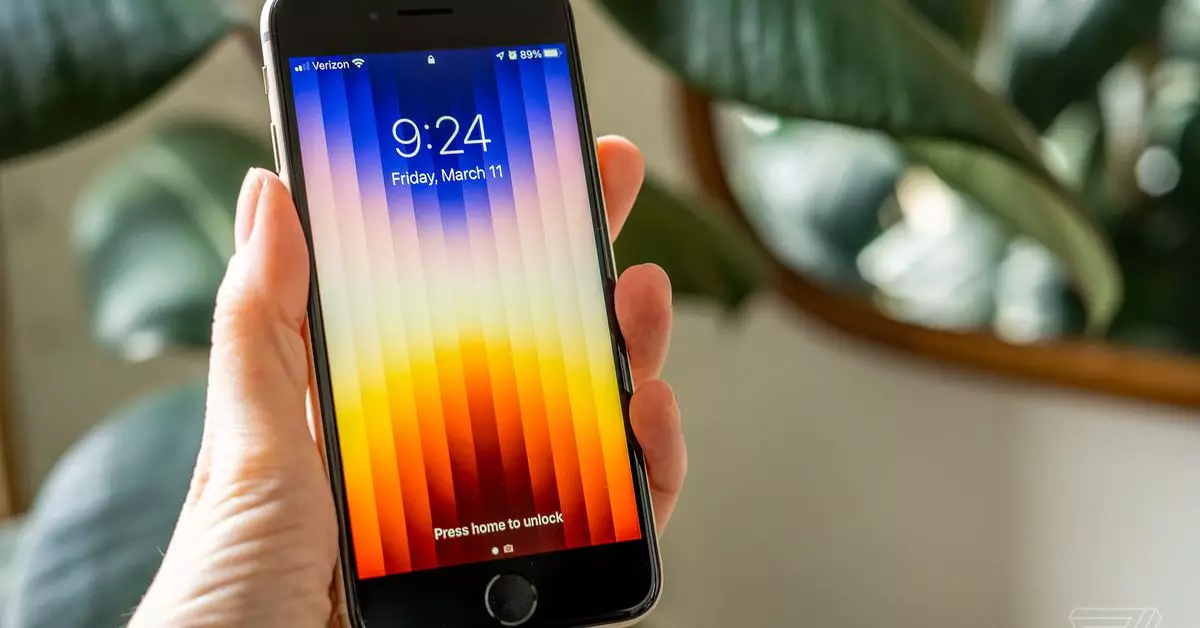In today’s smartphone landscape, where the competition is increasingly fierce, consumers are clamoring for affordable yet capable devices. The conversation often centers around Apple’s iOS ecosystem versus Android’s more extensive range of midrange options. Despite this contention, one glaring gap in Apple’s offerings is the lack of a genuinely impactful midrange smartphone—an area where Android continues to thrive.
Let’s take a closer look at the iPhone SE, specifically the third generation launched in 2022 for a starting price of $429. While the device boasts a sturdy build, water and dust resistance, and satisfactory photographic capabilities in adequate lighting, it ultimately underwhelms in several key areas that are critical for modern users.
For starters, the display leaves much to be desired. The LCD technology is outdated, resulting in a screen that feels cramped compared to the expansive displays featured on many contemporaneous Android smartphones. Coupled with overly large bezels, the phone becomes physically cumbersome for users who value a larger visual field—an essential aspect of today’s mobile experiences.
More glaringly, the base configuration offers only 64GB of storage—a paltry amount by 2024 standards—especially considering that low-light photography is rendered nearly useless without a night mode, making this device feel antiquated. In a world where Android offers many impressive midrange alternatives, the iPhone SE feels like it’s stuck in the past.
Android manufacturers have been more proactive in addressing consumer needs within the midrange segment. Take, for instance, the Google Pixel 8A, which sells for about $499. Alongside its IP67 rating for dust and water resistance, it delights users with an OLED display, a robust camera system that proceeds to shine even in low-light conditions, and a minimum of seven years of operating system updates—something Apple hasn’t committed to for its midrange offerings.
Equally commendable are Samsung’s midrange options, like the Galaxy A35, which offers a competitive $399 price point with a host of impressive features, including an OLED display. These offerings further illustrate how Apple has dropped the ball when it comes to the midrange market.
However, there’s a glimmer of hope for fans of the SE series. Anticipated updates for a fourth generation of the iPhone SE, expected in 2025, hint at promising enhancements that could reshape the phone’s market presence. Rumors suggest the device might adopt an OLED display, modernize its design with slimmer bezels, and include much-needed upgrades in processing power and RAM—allowing it to harness Apple Intelligence effectively.
Ultimately, an increase in the base storage from 64GB would significantly boost the iPhone SE’s appeal as a viable midrange option. Though a potential price increase to $499 may cause some hesitation, this price point could still yield a competitive device that meets the consumer’s evolving needs.
The established pattern among Apple users shows a growing tendency toward expensive models. Reports indicate that the average selling price of an iPhone in September 2024 was around $1,018. This trend raises important questions: Is this preference indicative of an innate desire for advanced features, or is it a direct result of limited affordable options?
Consumers often find themselves trapped in a cycle of financing and planned obsolescence, perceiving that once they start down this route, it is easier to opt for a more expensive model. The dilemma is exacerbated when low-end choices are lacking, pushing consumers towards high-cost devices just to achieve satisfactory performance.
Interestingly, Apple’s recent redesign of the Mac Mini demonstrates a similarly promising trajectory for the iPhone SE. By utilizing the components of a modern MacBook while stripping away superfluous features, Apple effectively created a highly functional and appealing entry-level desktop computer. At a starting price of $599, it resonated with consumers searching for value.
This minimalist yet strategic approach could easily be replicated in the iPhone line. By rethinking what constitutes a midrange smartphone, Apple can carve a niche that balances affordability, functionality, and performance.
As we stand at this juncture, a recalibrated iPhone SE that resonates with contemporary consumer needs could serve as a game-changer for Apple. Innovations that remove excess — and prioritize what users genuinely require — could liven up a stagnant category and reestablish the charm of the Apple brand within the midrange market. Until that moment arrives, the allure of Android will continue to captivate consumers in search of a well-rounded, affordable smartphone experience. The road ahead for Apple is challenging but filled with potential if it dares to pivot in an evolving marketplace.

